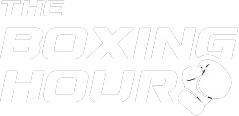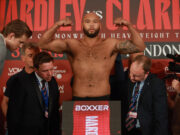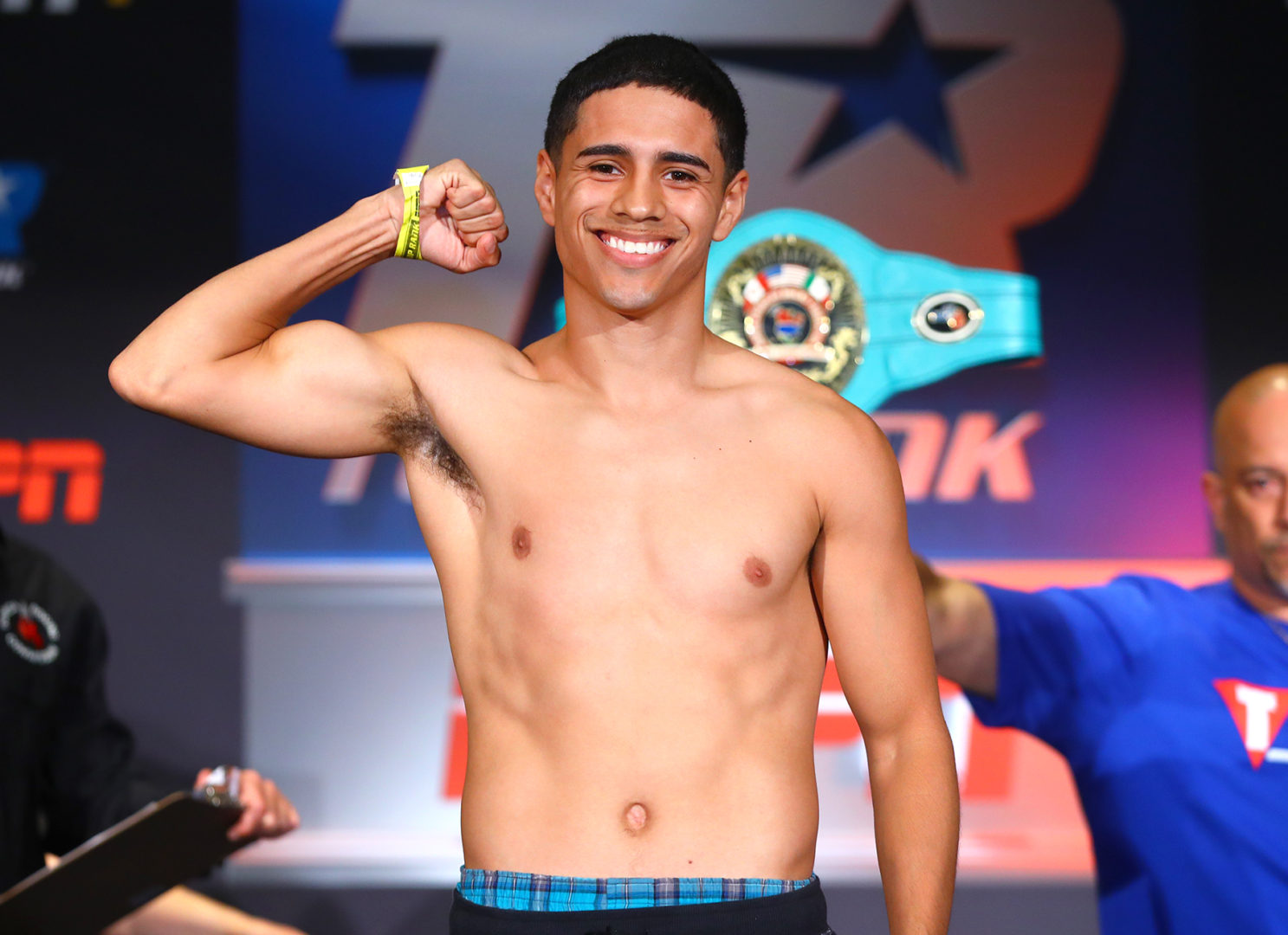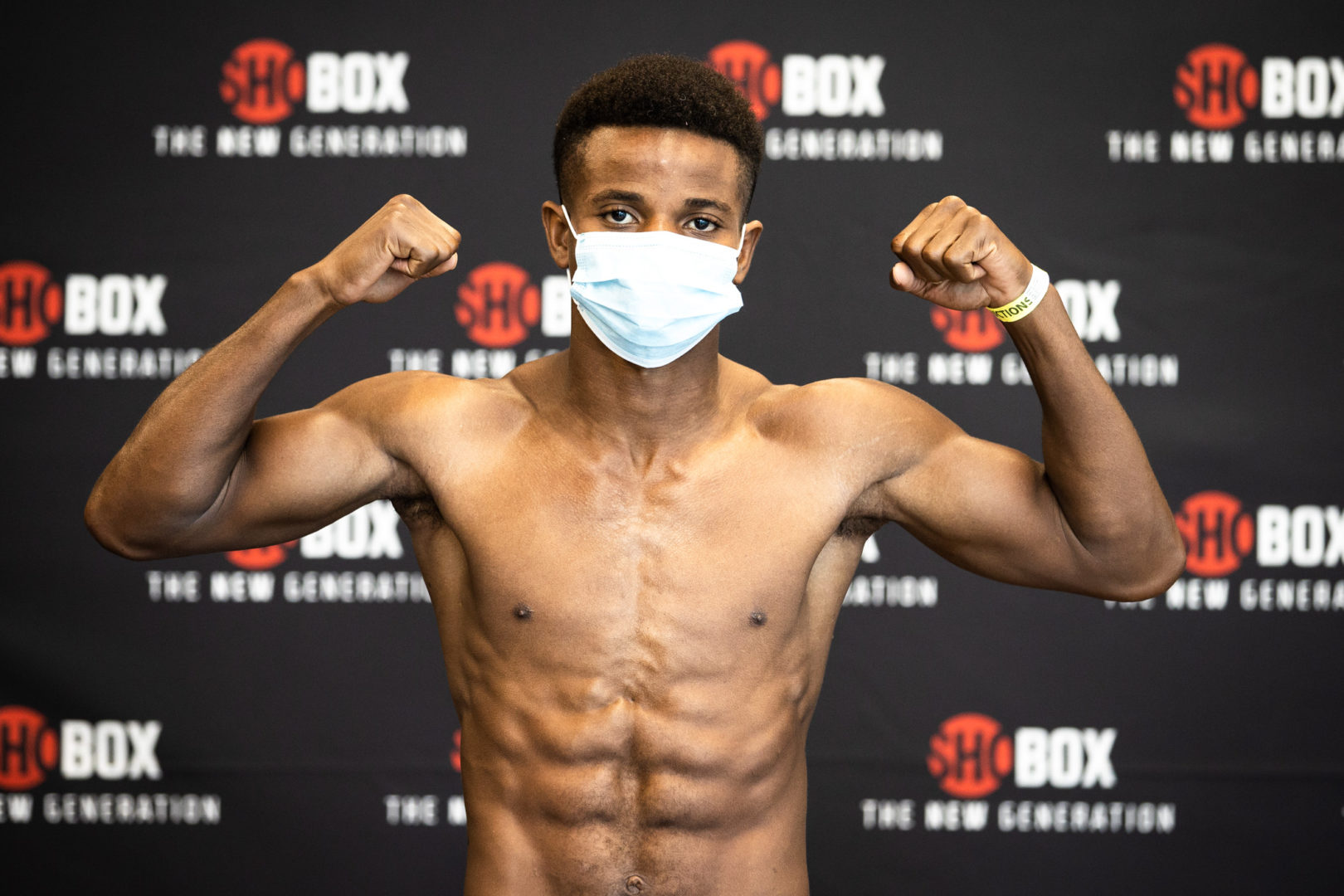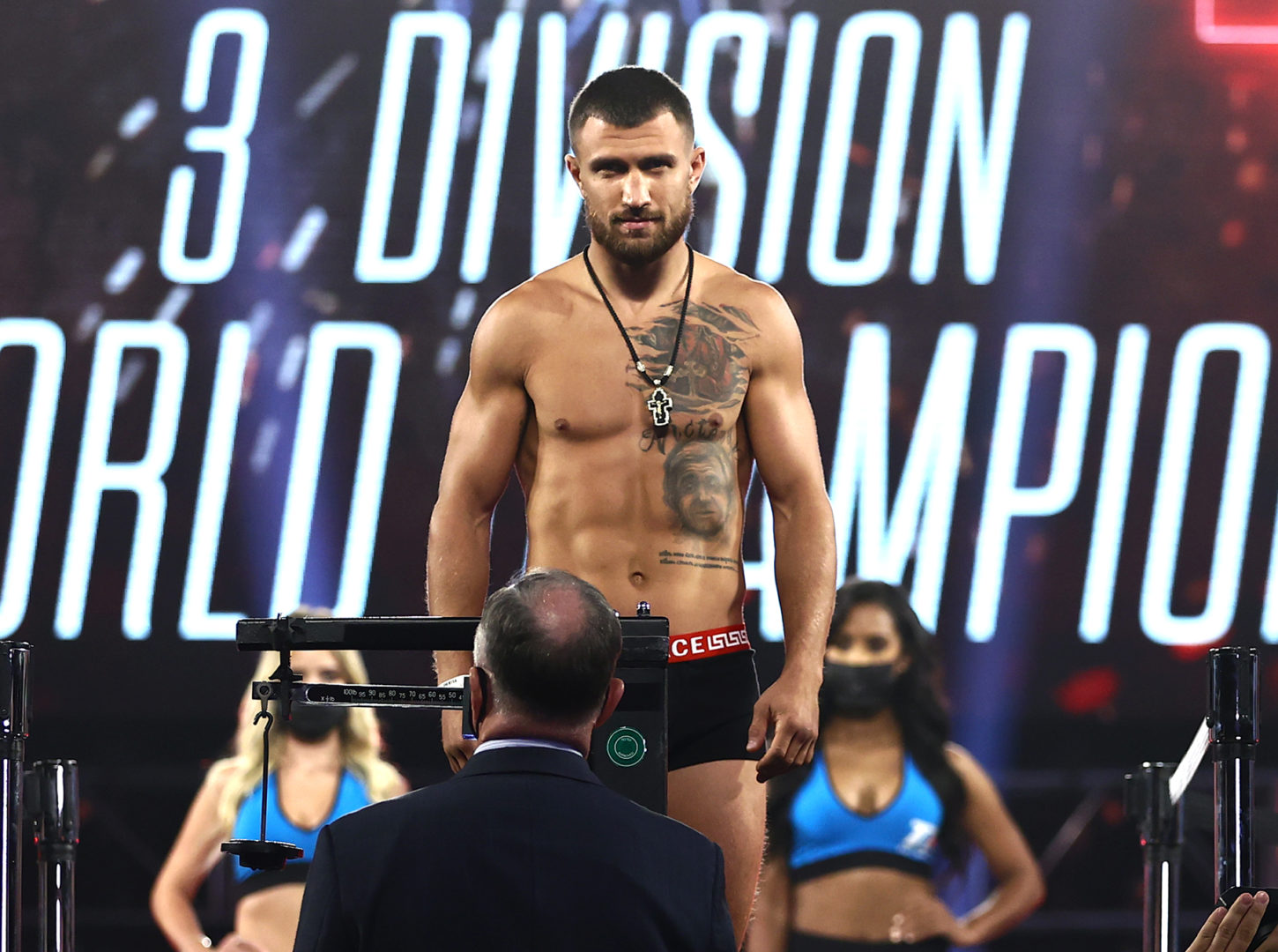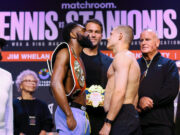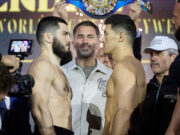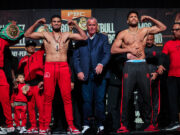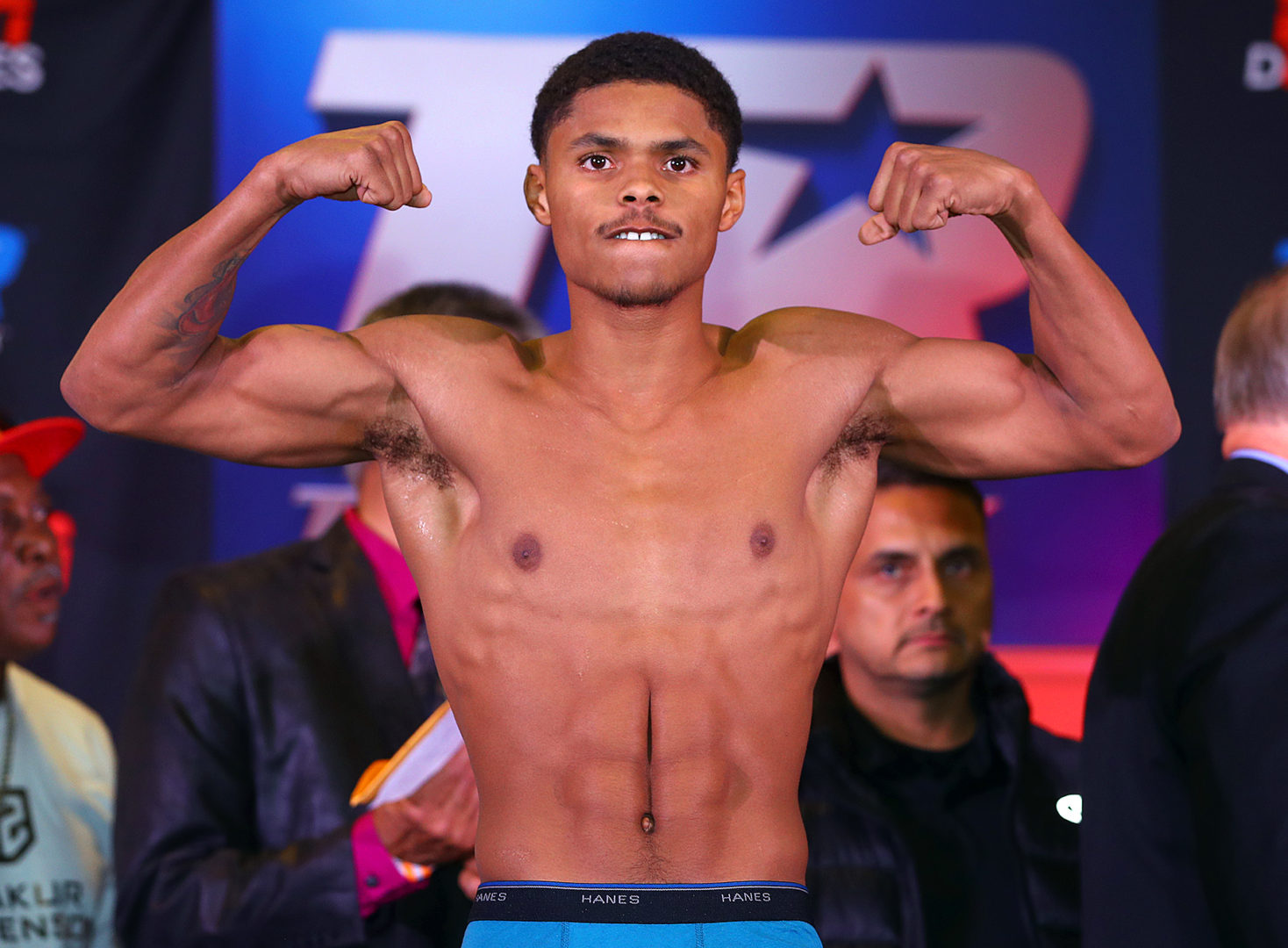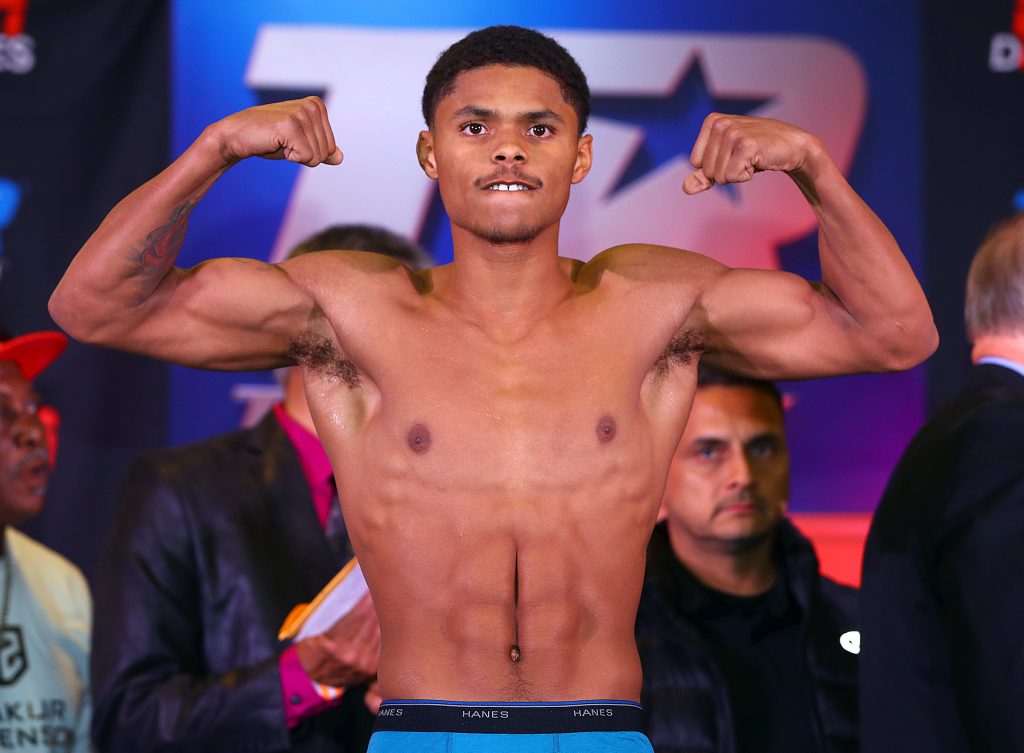
By Bart Barry-
Tuesday evening on ESPN undefeated American featherweight titlist “Fearless” Shakur Stevenson will make a 10-round match with Puerto Rico’s oncedefeated Felix Caraballo in the first major boxing broadcast since COVID-19 lockdowns began in March.
And so we return, limping and heavy and rusty, to the confines of the familiar, a column that treats, for the first time in 13 weeks, a contemporary boxing event. It’s an honest relief to pivot away from stakes-so-high subjects like global pandemics and national racism to a low-stakes happening like Tuesday’s ESPN fare.
In a recent interview Stevenson conceded he knew next to nothing about his opponent, and that, too, brought a helping of relief. Me either, Shakur. Tuesday’s broadcast is not about Caraballo or even so much about Stevenson, even if the unlikely happens and Caraballo upsets Fearless, but about boxing’s tentative return to a changed world. In this sense it is reminiscent of Pacquaio-Clottey in 2010, when the venue was at least important as its participants and much more important than Joshua Clottey.
What will boxing look like in a sealed Las Vegas ballroom? Not to empty ESPN’s telecast of suspense or anything, but it will bear a striking resemblance to every Friday-night appetizer card on fight weekends and the first six matches of every Saturday undercard in Las Vegas for the last 15 years, though with more-flattering acoustics.
Unsurprisingly promoter Top Rank has in Stevenson an apt protagonist for its return broadcast. Stevenson is young and new enough to settle for a contender’s purse while bringing pedigree and charisma enough to convince what sports generalists believe whatever ESPN shoves in their gaping maw he is the second coming of [insert name here]. In Stevenson’s last match, an October unanimous-decision victory for a vacant featherweight title, one ESPN commentator said aloud that, in order for Joet Gonzalez to win the match he would need, in the championship rounds, a Chavez-Taylor turn of events, a tablesetter comparison asinine as it was typical.
Former HBO commentator Max Kellerman was the champion of such affiliate-marketing schemes. He would liken some barely proven titlist to Rocky Marciano or Sugar Ray Leonard and then immediately walk it back with a clumsy “that’s not to say, Jim, that Triple G is in fact Muhammad Ali!” – knowing the associative sauce was ladled and would congeal on the minds of HBO viewers. Last week it was a similar game of Stevenson stating he doesn’t like to compare himself to Floyd Mayweather, much the same way this column doesn’t like comparing itself to Don Quijote.
Wait, did Bart just compare himself to Cervantes?
No, of course not, he would never do so and can’t be blamed if you accidentally did.
Stevenson is right not to compare himself to Mayweather. When he says he is better than Floyd was after 13 prizefights what he means is that he fights more like Money May than Floyd did. True enough. Stevenson is featherfisted when set beside Pretty Boy Floyd, who was more often compared to Mike Tyson than any shoulder-rolling ring general in the early days of his career, which is the largest reason Stevenson’s non-comparison to Floyd doesn’t bode particularly well for the lad. Nobody was exclaiming about Floyd’s ring IQ or footwork that early in Mayweather’s career because he was knocking opponents stiff. The defensive mastery Mayweather is now known for was a product of adjustments he made four weightclasses and many broken handbones later.
Top Rank knows all of this the same way it knew what it had in Mayweather after 13 prizefights. One assumes Felix Caraballo is a proper fit for Stevenson’s style and will make both an entertaining match and a showcase victory for Stevenson.
But that’s not really of the moment, is it? How many sports-deprived folks want Tuesday-night boxing and how feasible is something comparatively simple as a fightcard broadcast during a pandemic and how much financial sense does any of this make right now and what athletic-commission protocols feel heavyhanded – those are of the moment. It’s already something we’re thinking, so let’s go ahead and state it: After more than a week of watching nationwide gatherings tens of thousands of citizens strong, how current to us do the COVID-19 protocols arranged and agreed-to a month ago now seem?
Top Rank apparently spent upwards of $25,000 on testing for Tuesday’s card, to ensure its antivirus venue is airtight. Meanwhile, in just about every city from which Tuesday’s fighters hail, thousands of protesters gather in close quarters for hours at a time, shouting and singing and jostling and sweating and sneezing and coughing. There is the matter of comparative viral load in open air, yes, and the larger matter of legal liability – there’s nobody to sue if you get sick demanding an end to the legal system – but Tuesday’s protocols feel already outdated.
The question is whether they feel outdated because citizens have ended quarantines and lockdowns with a fistraised fury, or because sport itself feels so frivolous at this moment.
There is a chance the United States of America is unraveling right now, completing its arc as an empire in record time, and if that’s the case, if that’s even a possibility, there can be no wonder why Walt Disney Company, owner of ESPN and an institution that has benefitted from American hegemony disproportionately more than most, would be so invested in a return to the old normal of sports-as-opiate. The irony is lost on no one, no one in the world, the athletes Disney now needs to restore its old normal come almost exclusively from communities that have played the role of exploited far more often than beneficiary.
Bart Barry can be reached via Twitter @bartbarry
